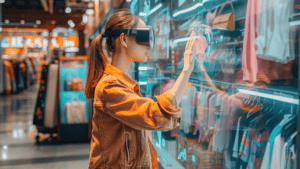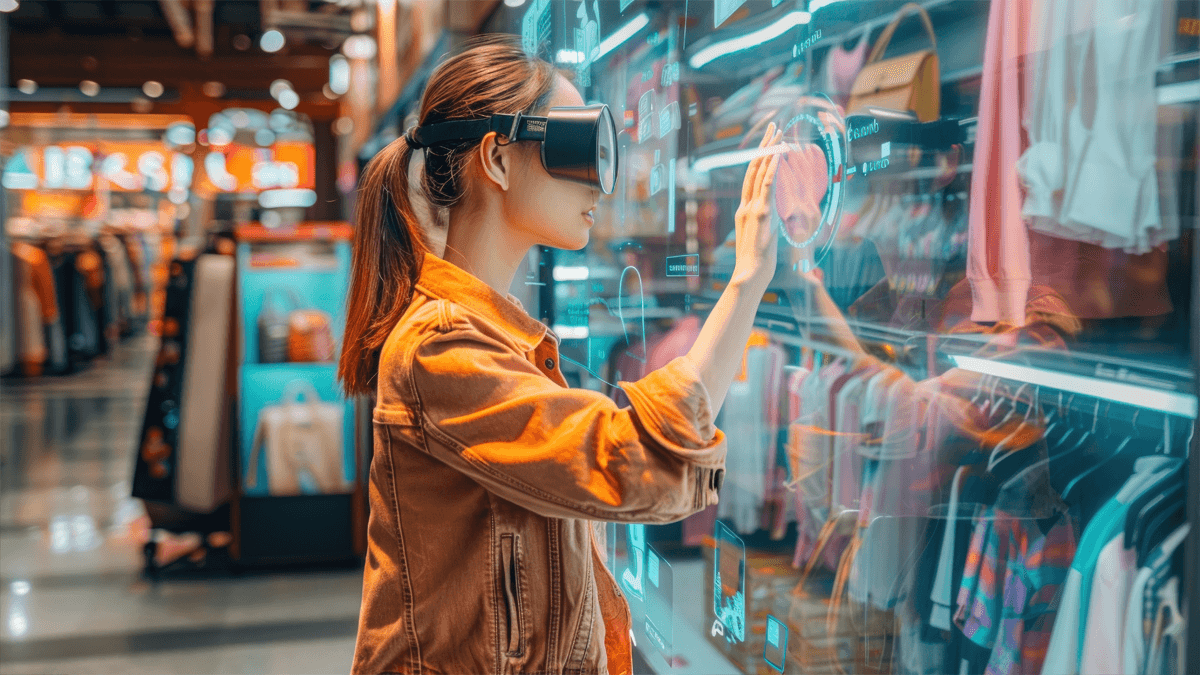In the fast-moving and competitive manufacturing industry, how can companies stay ahead of the curve while ensuring their operations run like a well-oiled machine? The pressure to streamline processes, cut costs, and meet fluctuating demands requires manufacturers to make smarter, faster, and more informed decisions.
The key to thriving in this environment lies in the boardroom, where crucial decisions are made that shape the future of these organizations. However, with the increasing complexity of modern manufacturing, decision-making has become more challenging than ever before.
This is where Tagbin BoardRoomAI steps in—an innovative AI boardroom solutions that is revolutionizing how manufacturers operate. By empowering leaders to make smarter, data-backed decisions right where it matters most—in the boardroom—Tagbin BoardRoomAI is helping companies stay agile, competitive, and forward-thinking.

The Challenge: Traditional Decision-Making in a Complex Landscape
Imagine a mid-sized manufacturing company facing the typical struggles of rising production costs, supply chain disruptions, labor shortages, unpredictable market demands and increasing competition. The management team relies entirely on endless reports, historical data, and gut instincts, yet their decisions often feel incomplete or reactive. As a result, inefficiencies build up, operational costs rise, and opportunities for improvement slip through the cracks.
In an industry where time is money, these inefficiencies lead to costly delays, missed opportunities, and frustration across teams. Despite having an abundance of data at their fingertips, board members are often unable to fully capitalize on it to make the strategic, forward-thinking decisions necessary to keep their business ahead of the competition.
The Game Changer: BoardRoomAI Enters the Scene
BoardRoomAI, an AI-powered solution designed specifically to transform the way decisions are made in manufacturing boardrooms. BoardRoomAI isn’t just about providing data—it’s about translating data into actionable insights. From real-time data analysis to predictive analytics, this technology offers manufacturers the power to make informed, efficient decisions with clarity and confidence.
For example, the same mid-sized manufacturer now integrates BoardRoomAI into their operations. As the board convenes for their monthly strategy meeting, instead of leafing through stacks of reports, they are presented with clear, data-driven insights. These insights have already analyzed the company’s performance, identified inefficiencies, and forecasted potential market trends based on real-time data. The team is no longer reactive; they are proactive, able to adjust course with agility before problems arise.
Enhancing Operational Efficiency with BoardRoomAI
So how does BoardRoomAI help manufacturers enhance their operational efficiency? Here are some key ways:
- Data-Driven Insights: One of the biggest hurdles in boardroom meetings is the overwhelming amount of data. AI can quickly sift through massive datasets, providing a clear and concise analysis that highlights key trends and opportunities. This allows manufacturers to identify bottlenecks, optimize processes, and allocate resources more effectively.
- Predictive Analytics: Manufacturing is full of uncertainties, from fluctuating demand to supply chain issues. Tagbin BoardRoomAI’s predictive capabilities help manufacturers anticipate these challenges by analyzing patterns and historical data to forecast potential risks. This foresight enables companies to take preventative measures, reducing downtime and preventing costly delays.
- Real-Time Decision Support: Traditional boardroom meetings often involve decisions based on outdated or incomplete information. Tagbin BoardRoomAI provides real-time data analysis, giving manufacturers up-to-the-minute insights into their operations. This enables quick decision-making, ensuring that strategies are based on the most current information available.
- Cost and Resource Optimization: AI can identify areas where resources are being underutilized or costs are unnecessarily high. By providing detailed insights into production efficiency, labor usage, and material costs, manufacturers can implement targeted strategies to reduce waste and optimize resource allocation.
Simulating Scenarios for Smarter Decision-Making
A standout feature of Tagbin BoardRoomAI is its ability to run scenario simulations. Manufacturers can explore multiple decision pathways—whether it’s choosing to invest in a new production line or testing out new market strategies—without having to face the consequences of trial and error in the real world. By simulating outcomes, Tagbin BoardRoomAI allows board members to evaluate the risks and rewards of different strategies, ensuring that only the most optimized decisions make it to implementation.
For example, imagine a manufacturer considering a significant investment in automation technology. With Tagbin BoardRoomAI, they can run simulations to predict how this decision will impact production efficiency, costs, and labor allocation over time. With this foresight, they can proceed confidently, knowing they’ve chosen the strategy that will yield the best results.
Smarter, Faster, and More Collaborative Boardroom Meetings
Tagbin BoardRoomAI is not just about speeding up decision-making—it’s about making smarter decisions. By turning complex data into clear, actionable insights, it removes the guesswork from boardroom discussions. Decisions that were once delayed by debates over conflicting reports are now made quickly and collaboratively, thanks to the centralized data platform that BoardRoomAI provides.
Moreover, the AI-powered platform fosters better collaboration across departments. Stakeholders from operations, finance, and even human resources can now access a unified data stream that breaks down silos and promotes collective decision-making. This integrated approach ensures that every department has a voice and can contribute to decisions that optimize overall operational efficiency.
The Future of Manufacturing Decision-Making
As industries worldwide face increasing competition and uncertainty, manufacturers are under pressure to continuously improve their operations and stay agile. Tagbin BoardRoomAI empowers manufacturers to do just that by transforming their approach to decision-making in the boardroom. With AI-driven insights, scenario simulations, and predictive analytics, it provides a new level of clarity and precision that allows businesses to maximize operational efficiency and maintain their competitive edge.
For any manufacturer looking to take their boardroom strategies to the next level, BoardRoomAI represents the future of decision-making—a future where every decision is informed, timely, and designed to keep operations running smoothly.
As the industry evolves, the role of AI in manufacturing boardrooms will only become more critical. With BoardRoomAI, manufacturers can confidently navigate the complexities of the modern business landscape, armed with the insights and agility they need to succeed.
Conclusion:
Tagbin BoardRoomAI is at the forefront of this revolution, empowering manufacturers to leverage the full potential of artificial intelligence to drive operational efficiency.
By integrating AI into the boardroom, manufacturers not only improve their day-to-day operations but also future-proof their businesses against upcoming challenges. With BoardRoomAI, the future of manufacturing is no longer just about making decisions—it’s about making the right decisions.
In conclusion, maximizing operational efficiency in today’s competitive manufacturing environment requires a combination of cutting-edge technology and strategic thinking. BoardRoomAI provides manufacturers with the insights, foresight, and agility needed to stay ahead of the curve, ensuring that boardroom decisions are smarter, faster, and more impactful than ever before.

AI and Governance Reimagined: Inside India’s New Training Frontier
AI Labs: The New Engines of Governance Leadership Every year, India’s premier training institutions prepare over 200 future civil servants, individuals who will go on to lead, administer, and shape the nation’s future. Their training is grounded in rigorous theoretical knowledge, administrative frameworks, and policy understanding. Today, as governance enters a data-rich, digital-first era, this foundation is expanding in exciting new ways. The question is no longer “if” technology will play a role in governance but how deeply, and how intelligently. From Classrooms to Command Centers: A Natural Evolution India’s governance ecosystem is evolving rapidly, and so is the approach to training its leaders. With the integration of advanced technologies like AI, immersive simulations, and predictive analytics, training environments are becoming more dynamic, contextual, and future-ready. Tagbin BoardRoomAI is at the forefront of this transformation powering immersive AI Labs and Strategy Rooms that are redefining how civil servants engage with data, make decisions, and develop policy thinking. These are not just modern facilities, they are living ecosystems for strategic governance. How BoardRoom AI Elevates Policy Learning At the heart of these labs is BoardRoom AI: a smart, integrated solution that enables real-time data analysis, predictive modeling, interactive dashboards, and intelligent simulations. Trainees are no longer limited to conceptual exercises they work with live, contextual datasets that reflect on-the-ground realities. Take the issue of literacy, for example. Using AI Labs, trainees can explore: These are not just insights, they’re tools for sharper thinking, enabling targeted, data-driven strategies built for real-world impact. Training in Real-Time: Scenario Simulations with Live Data Governance often involves responding to evolving, high-pressure situations. AI Labs now enable trainees to participate in live, AI-driven simulations, be it managing a flood crisis, allocating emergency supplies, or mitigating the impact of a sudden economic shift. These scenarios integrate live data streams, predictive tools, and user interaction building a mindset that is proactive, analytical, and agile. Officers are trained not just to respond, but to anticipate, adapt, and lead with clarity. The New Administrator: A Strategic Technocrat With tools like BoardRoom AI, the next generation of civil servants is being trained to be more than administrators. They are becoming: Strategic thinkers, armed with real-time insights Data-literate decision-makers, enabled by AI dashboards Policy architects, equipped with tools to simulate, evaluate, and act. This is not just a skill upgrade it’s a mindset shift. And it’s already in motion. Vision 2047 Begins Here India’s vision for 2047 is ambitious, bold, and future-facing. As we move toward a new era of digital governance, the infrastructure we build today both physically and intellectually will shape how policies are crafted and executed tomorrow. AI Labs and Strategy Rooms powered by Tagbin’s BoardRoom AI aren’t just about integrating technology, they are about incubating governance leadership that is smarter, faster, and more visionary. Because in the end, better governance starts with better thinking and better thinking starts here.

Immersive Tech Retail 2025: Elevating Customer Experience Through Next-Gen Tech
You walk into your favorite store, and instead of wandering through endless aisles, a friendly digital assistant greets you by name. It already knows your style, your size, and even what you’ve been browsing online. Before you can ask, it suggests a pair of jeans you’d love, and with a quick wave of your hand, a smart mirror lets you “try them on” virtually. No fitting rooms, no hassle. Just a seamless, personalized experience that feels like magic. This isn’t a scene from a sci-fi movie. By 2025, shopping will feel less like a chore and more like an interactive adventure, thanks to immersive tech like augmented reality (AR), virtual reality (VR), and artificial intelligence (AI). Retailers aren’t just selling products anymore, they’re crafting experiences that blend the best of digital and physical worlds. Shopping That Knows You Better Than You Do Personalization isn’t new, but in 2025, it’s next-level. Imagine walking into a store where the lighting, music, and even product displays adjust to your tastes. AI remembers your past purchases, your preferred colors, and even how you like to shop—whether you’re a quick grab-and-go buyer or someone who loves browsing. This isn’t just convenient, it makes shopping fun again. Virtual Stores: The Mall Comes to You What if you could shop at a boutique in Paris without booking a flight? In 2025, VR stores will make that possible. Put on a headset (or just use your phone), and suddenly, you’re browsing a virtual showroom where you can pick up products, examine them closely, and even chat with a live salesperson, all from your couch. For busy shoppers, this means no crowds, no lines, and no wasted trips to the store. Brick-and-Mortar Stores Get a High-Tech Makeover Physical stores aren’t disappearing, they’re evolving. In 2025, walking into a retail space will feel like stepping into the future. The best part? Staff are freed up to help with real questions, not just ring up purchases. Why We’ll Love Shopping More in 2025 Beyond convenience, immersive tech does something bigger: it makes shopping emotional. The Challenges: Not Everyone’s On Board Yet The Bottom Line: Shopping Becomes an Experience By 2025, retail won’t just be about buying things, it’ll be about enjoying the journey. Whether you’re testing makeup in AR, exploring a virtual store in pajamas, or walking into a brick-and-mortar shop that greets you like an old friend, tech will make every interaction smoother, more personal, and more memorable. The future of shopping isn’t just smart, it’s human. And that’s something to look forward to.

Smart Engagement: The Rise of Informative Experiences in the Digital Age
You’re browsing online for a new skincare product. Instead of being bombarded by flashy ads or popups pressuring you to “Buy Now,” you come across an AI-powered skincare app, INARA, where you upload your picture for your skin analysis. Then, it shares detailed, personalised suggestions, guides you through common skincare mistakes, and even provides an interactive skin health tracker. You haven’t bought anything yet, but you already feel understood, educated, and more connected to the brand than any loud advertisement could manage. This is the power of informative experiences, where the priority is not selling, but serving. In today’s digital world, customer expectations have evolved rapidly. People no longer want to be “sold to”; they want to feel informed, empowered, and valued. Brands that adapt to this shift by offering meaningful, knowledge-rich interactions are not only earning trust but also creating deeper, long-term connections. From Push to Pull: The Shift in Customer Engagement Traditional marketing followed a push model: loud, aggressive, and one-directional. It relied on getting in front of people and convincing them to act. But with digital saturation, audiences have grown immune to such tactics. Today, engagement is about pulling people in, giving them something valuable enough that they want to stay, explore, and eventually convert. Informative experiences offer that value. Whether it’s in the form of a tutorial, an insightful blog, an interactive quiz, a personalised calculator, or even just a well-structured FAQ, content that informs fosters curiosity, clarity, and connection. Why Information Builds Trust? At the core of every customer relationship lies trust. And trust, especially online, isn’t built overnight. People want to feel like they are making smart decisions. When a brand offers transparent, unbiased, and helpful content, it shows that it respects the customer’s intelligence. It shifts the dynamic from “us vs. them” to “we’re in this together.” This is especially true in industries where purchases are emotionally or financially significant, such as health, finance, education, or lifestyle. The more complex the decision, the more customers crave guidance. And when that guidance comes without hidden motives, it creates a lasting impression. Interactive, Personalised, and Value-Driven The best informative experiences today aren’t just about dumping information. They’re about creating two-way interactions. For example, imagine visiting a website and being guided through a series of questions that lead to personalised product or service recommendations. That’s far more engaging than scrolling through a generic catalogue. It saves time, adds relevance, and makes the customer feel seen. Similarly, tools like virtual consultations, ROI calculators, onboarding demos, or even community forums allow users to explore and learn at their own pace. These tools turn passive browsers into active participants. And here’s the magic: customers who interact deeply with content are more likely to stay loyal. Not just because they got a product, but because they gained knowledge, felt confident, and had a frictionless experience. The Emotional Side of Information Informative engagement isn’t just logical, it’s emotional. When people feel informed, they feel in control. And when they feel in control, they feel safe. In an age where information overload is a real concern, the brands that can simplify complexity stand out. They become not just a service provider, but a guide. And that role of guiding rather than pushing is what customers remember. For instance, a person exploring sustainable living. They don’t just want a product labelled “eco-friendly.” They want to know how it’s sustainable, why it matters, and what impact their purchase makes. Providing such depth creates emotional resonance and a sense of shared values. Seamless Integration Across Touchpoints The most effective informative experiences are integrated seamlessly across a brand’s digital touchpoints, from websites and apps to emails and social media. It’s not about having a separate “learning hub,” but about infusing every stage of the customer journey with clarity and context. For example, a chatbot that educates users instead of simply handling complaints, or a product page that includes comparison charts, explainer videos, and customer Q&A, are small but powerful ways to educate while engaging. Measuring the Impact You might wonder, does all this information lead to conversions? The answer is a strong yes. While informative experiences may not lead to instant sales, they build credibility, reduce bounce rates, increase time spent on platforms, and lead to more qualified leads. They also decrease return rates because customers make informed choices. Over time, these touchpoints become part of a customer’s memory map, and when it’s time to make a decision, the brand that helped them understand, not just sell, is the one they’ll return to. The Future of Engagement Is Empowerment In the digital era, connection is no longer about proximity; it’s about relevance. Customers crave meaning, not marketing. And they reward brands that prioritise education over persuasion. By shifting focus from transactions to transformations, from pushing products to sharing knowledge, businesses are not only engaging better but also building a culture of trust, learning, and loyalty.


